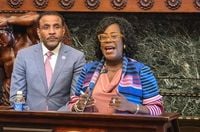Philadelphia’s public transportation system is facing a crisis that’s rippling across every corner of the city and its suburbs. Starting August 24, 2025, SEPTA, the Southeastern Pennsylvania Transportation Authority, put into effect a sweeping 20% reduction in services for buses, trolleys, and subway lines, as well as a 21.5% fare hike. The cuts, which eliminated at least 32 bus routes including three at the Fern Rock Transportation Center, have left thousands of daily riders scrambling for alternatives and have triggered a citywide debate about the future of transit in the region.
The impact was immediate and deeply felt. On August 25, the first weekday after the changes, commuters reported chaos and confusion. Marquise Williams, a SEPTA ambassador, described helping riders navigate a “new maze of connections,” noting, “People were a little bit knowledgeable about what’s going on. Still, you have people out here with a lot of questions—specific questions about how to get to their destination,” according to WPVI. Some, like Tara Cameron of Mayfair, missed their usual buses entirely. Others, such as James Lee from Olney, saw their commutes balloon from 45 minutes to a staggering two and a half hours. “Took me two and a half hours to take my grandson home from Broad and Olney to Church Street,” Lee recounted to WPVI.
For many, the changes are more than just an inconvenience—they’re a threat to livelihoods. Mecca Abdul, who works at a mall in Northern Liberties, said, “We got jobs to get to. Kids are going to start being penalized for school. You’re going to be creating a lot of problems for people. A lot.” Her commute now requires two additional buses, an extra hour, and seven more dollars each day—money and time she simply doesn’t have.
Students in Philadelphia have been hit especially hard. On the first day of school, students at Central High School faced long waits and even longer rides. “It’s going to take way more time, maybe closer to an hour. I’ll be even later to school most of the time,” said Erin Ockimey, an 11th grader, while 10th grader Osiris Adjepong added, “I’m going to be on the bus for about an hour and 30 minutes. That’s going to be hard to do, especially when it comes to me trying to make sure I get to school on time.” School attendance numbers reflected these challenges, with Superintendent Tony Watlington reporting that some schools saw attendance drop from the usual 90-plus percent to the 70s, directly attributing the decline to transportation issues.
The crisis is not limited to students. Temple University, where nearly 86% of students are commuters and 37% rely on SEPTA, is seeing its community struggle. Charlotte Johnson, a junior journalism major, explained to The Temple News, “Having those bus routes cut will definitely affect how I get to my job on a day-to-day basis.” Joy Donovan, a junior film major, worried about the broader impact: “It’s a cut to both Philly tourism and sports events that rely pretty heavily on regional rail. It’s also going to hurt the multitude of people who work or live in the area and then commute to Philly or New York.”
The financial burden is growing, too. With fares raised to $2.90 and rideshare services like Uber and Lyft often costing much more, students and workers are feeling the pinch. John Joyce, a sophomore, shared, “The other night, I had to use an Uber to get home because I missed the train. It was about 23 bucks compared to the $3 to $5 it would have been.” Temple University offers a SEPTA semester pass program with a 10% discount, but for many, that’s not enough to offset the increased costs and reduced convenience.
Compounding the problem, a second wave of cuts is slated for January 2026. This phase will eliminate five regional rail lines, impose a 9 p.m. curfew on all rail services, and cut 18 more bus routes—resulting in a total 45% reduction in service. The Delaware Valley Regional Planning Commission warns that if all planned cuts go into effect by January 1, 2026, an estimated 275,000 additional vehicles could flood local roads. “We like to say that’s the equivalent of the entire population of Pittsburgh, including the kids, coming here and driving cars,” said Ariella Maron, the commission’s executive director. The likely result? Increased congestion, slower travel times, and more pollution across the region.
Philadelphia’s leaders are sounding the alarm. Mayor Cherelle Parker, City Council President Kenyatta Johnson, and Councilmember Mike Driscoll have all called on the Pennsylvania General Assembly to act. “Reliable and safe public transportation is crucial for our city and our commonwealth’s economic future,” Parker said, emphasizing that the city has already approved nearly $800 million in operating and capital funds for SEPTA in its five-year budget plan. But, as Parker pointed out, “If there was a way the city of Philadelphia could have addressed this, it would be done, but we can’t do this alone.”
The political deadlock in Harrisburg has become a focal point of frustration. The state legislature, split between a Democratic-controlled House and a Republican-led Senate, has failed to agree on how to address SEPTA’s $213 million deficit. “The longer that we do not have a deal, the more we’re going to see a significant negative impact on those individuals who are severely impacted by the cut,” Johnson warned, according to WHYY. Driscoll, who chairs City Council’s Transportation Committee, pleaded, “I’m begging Senate to get back to work and do your job.”
Meanwhile, legal challenges are brewing. Attorney George Bochetto, representing several public interest groups, has put SEPTA on notice and intends to file a lawsuit to stop the cuts. “Hopefully, issuing a restraining order preventing SEPTA from doing rollbacks to the court can have a full blown preliminary injunction hearing,” Bochetto told WPVI.
City officials, business leaders, and advocacy groups agree: the consequences of inaction could be dire. In a joint statement, Johnson and Driscoll warned, “Without a long-term, sustainable funding solution, the very foundation of our economy, our schools, and our communities is at risk. Our workforce, the engine that drives the regional economy, depends on reliable public transit to get to jobs across Philadelphia, the suburbs, and beyond. When SEPTA falters, the ripple effect hits every household, every business, and every neighborhood.”
As the city waits for Harrisburg to break the impasse, frustration and anxiety are mounting. For now, riders are left to navigate longer commutes, higher costs, and uncertain futures—while the city’s leaders and residents keep pushing for a solution that will keep Philadelphia moving.


